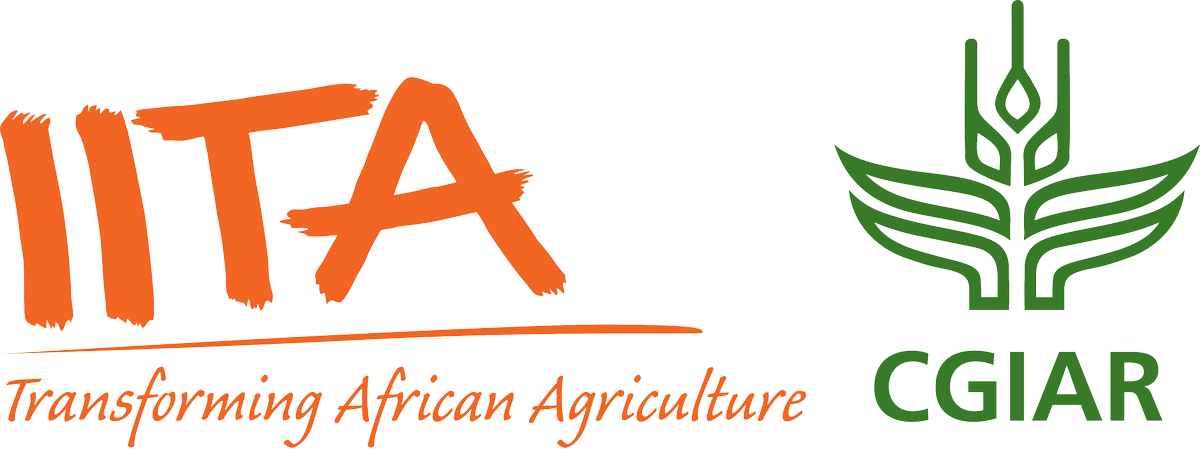| dc.contributor.author | Laub, M. |
| dc.contributor.author | Necpalova, M. |
| dc.contributor.author | Van de Broek, M. |
| dc.contributor.author | Corbeels, M. |
| dc.contributor.author | Ndungu, S.M. |
| dc.contributor.author | Mucheru-Muna, M.W. |
| dc.contributor.author | Mugendi, D. |
| dc.contributor.author | Yegon, R. |
| dc.contributor.author | Waswa, W. |
| dc.contributor.author | Vanlauwe, B. |
| dc.contributor.author | Six, J. |
| dc.date.accessioned | 2024-09-30T08:36:45Z |
| dc.date.available | 2024-09-30T08:36:45Z |
| dc.date.issued | 2024-08-22 |
| dc.identifier.citation | Laub, M., Necpalova, M., Van de Broek, M., Corbeels, M., Ndungu, S.M., Mucheru-Muna, M.W., ... & Six, J. (2024). Modeling integrated soil fertility management for maize production in Kenya using a Bayesian calibration of the DayCent model. Biogeosciences, 21(16), 3691-3716. |
| dc.identifier.issn | 1726-4170 |
| dc.identifier.uri | https://hdl.handle.net/20.500.12478/8560 |
| dc.description.abstract | Sustainable intensification schemes such as integrated soil fertility management (ISFM) are a proposed strategy to close yield gaps, increase soil fertility, and achieve food security in sub-Saharan Africa. Biogeochemical models such as DayCent can assess their potential at larger scales, but these models need to be calibrated to new environments and rigorously tested for accuracy. Here, we present a Bayesian calibration of DayCent, using data from four long-term field experiments in Kenya in a leave-one-site-out cross-validation approach. The experimental treatments consisted of the addition of low- to high-quality organic resources, with and without mineral nitrogen fertilizer. We assessed the potential of DayCent to accurately simulate the key elements of sustainable intensification, including (1) yield, (2) the changes in soil organic carbon (SOC), and (3) the greenhouse gas (GHG) balance of CO2 and N2O combined.
Compared to the initial parameters, the cross-validation showed improved DayCent simulations of maize grain yield (with the Nash–Sutcliffe model efficiency (EF) increasing from 0.36 to 0.50) and of SOC stock changes (with EF increasing from 0.36 to 0.55). The simulations of maize yield and those of SOC stock changes also improved by site (with site-specific EF ranging between 0.15 and 0.38 for maize yield and between −0.9 and 0.58 for SOC stock changes). The four cross-validation-derived posterior parameter distributions (leaving out one site each) were similar in all but one parameter. Together with the model performance for the different sites in cross-validation, this indicated the robustness of the DayCent model parameterization and its reliability for the conditions in Kenya. While DayCent poorly reproduced daily N2O emissions (with EF ranging between −0.44 and −0.03 by site), cumulative seasonal N2O emissions were simulated more accurately (EF ranging between 0.06 and 0.69 by site). The simulated yield-scaled GHG balance was highest in control treatments without N addition (between 0.8 and 1.8 kg CO2 equivalent per kg grain yield across sites) and was about 30 % to 40 % lower in the treatment that combined the application of mineral N and of manure at a rate of 1.2 t C ha−1 yr−1. In conclusion, our results indicate that DayCent is well suited for estimating the impact of ISFM on maize yield and SOC changes. They also indicate that the trade-off between maize yield and GHG balance is stronger in low-fertility sites and that preventing SOC losses, while difficult to achieve through the addition of external organic resources, is a priority for the sustainable intensification of maize production in Kenya. |
| dc.description.sponsorship | Schweizerischer Nationalfonds zur Förderung der Wissenschaftlichen Forschung |
| dc.description.sponsorship | European’s Horizon 2020 |
| dc.format.extent | 3691-3716 |
| dc.language.iso | en |
| dc.subject | Soil Fertility |
| dc.subject | Maize |
| dc.subject | Crop Production |
| dc.subject | Food Security |
| dc.subject | East Africa |
| dc.title | Modeling integrated soil fertility management for maize production in Kenya using a Bayesian calibration of the DayCent model |
| dc.type | Journal Article |
| cg.contributor.crp | Maize |
| cg.contributor.crp | Roots, Tubers and Bananas |
| cg.contributor.affiliation | ETH Zurich |
| cg.contributor.affiliation | University College Dublin |
| cg.contributor.affiliation | University of Montpellier |
| cg.contributor.affiliation | International Institute of Tropical Agriculture |
| cg.contributor.affiliation | Kenyatta University |
| cg.contributor.affiliation | University of Embu |
| cg.coverage.region | Africa |
| cg.coverage.region | East Africa |
| cg.coverage.country | Kenya |
| cg.coverage.hub | Central Africa Hub |
| cg.researchtheme | Natural Resource Management |
| cg.identifier.bibtexciteid | LAUB:2024a |
| cg.isijournal | ISI Journal |
| cg.authorship.types | CGIAR and developing country institute |
| cg.iitasubject | Agronomy |
| cg.iitasubject | Crop Systems |
| cg.iitasubject | Food Security |
| cg.iitasubject | Maize |
| cg.iitasubject | Plant Production |
| cg.iitasubject | Soil Fertility |
| cg.journal | Biogeosciences |
| cg.notes | Open Access Journal |
| cg.accessibilitystatus | Open Access |
| cg.reviewstatus | Peer Review |
| cg.usagerightslicense | Creative Commons Attribution 4.0 (CC BY 0.0) |
| cg.targetaudience | Scientists |
| cg.identifier.doi | https://doi.org/10.5194/bg-21-3691-2024 |
| cg.iitaauthor.identifier | Marc Corbeels: 0000-0002-8084-9287 |
| cg.iitaauthor.identifier | bernard vanlauwe: 0000-0001-6016-6027 |
| cg.futureupdate.required | No |
| cg.identifier.issue | 16 |
| cg.identifier.volume | 21 |

